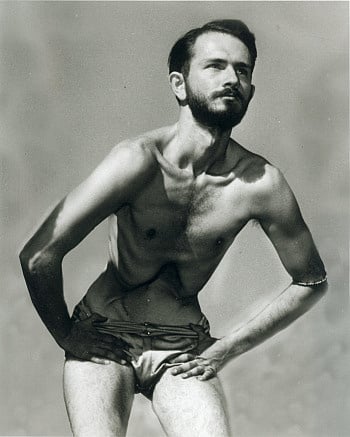What Is the Meaning of Bandha?
Literally “lock” or “closed.” (1)
 A bandha is a particular type of yogic technique, similar to a yoga posture, for raising the kundalini energy in the spine (2)
A bandha is a particular type of yogic technique, similar to a yoga posture, for raising the kundalini energy in the spine (2)
Bandha is a physical posture done to create a lock in between physical organs to help prana (energy/ life force) flow in the desired, upward direction in the body. The increased life force helps awaken kundalini power in the Sushumna and chakras. It helps spiritual evolution.
Paramhansa Yogananda emphasized the stomach lock, known as “uddiyana bandha” in Sanskrit. It is part of his Energization Exercises routine, which is recommended before meditation.
Here are a two examples of bandhas that Swami Kriyananda teaches in his book The Art and Science of Raja Yoga:
Jalandhara Bandha
The Chin Lock
Press the chin firmly into the chest, as close to the throat as possible. Inhale slowly, and hold the breath throughout the time that you hold the position. Feel that you are drawing the energy up the spine into the cervical center, or vishuddha chakra, and from there to the brain. (Jala means the brain. Dhara signifies the upward pull of energy to the brain.)
Jivha Bandha
The Tongue Lock
Turn the tip of the tongue back toward the uvula; pressing it hard against the soft palate, move it forward across the roof of the mouth until it rests firmly against the base of the front teeth. Press the entire tongue up into the roof of the mouth in such a way as to fill the entire roof with the tongue. (3)
Hatha Yoga (the physical branch of Yoga philosophy) specifies six main bandhas: jalandhara (as above) and five additional bandhas, as follows.
Mula Bandha
Root Lock
The mula bandha is connected to the Muladhar Chakra and is connected to survival instinct, and desires. It is close to the pelvis and works with subtle energies that strengthen the pelvic floor and may lead to a kundalini awakening. You can also use it to transmute your sexual energy to activate your kundalini.
Uddiyan Bandha
Upward Abdominal Lock
There’s a lot of benefit to doing this bandha! It strengthens your internal organs and stimulates your digestive system by drawing blood flow from your abdominal cavity to the back of your chest and your heart.
Maha Bandha
Great Lock
This bandha is a combination of three bandhas. To perform it correctly you engage the jalandhar bandha, uddiyana bandha, and then mula bandha. You hold your breath as long as you are comfortable. Then release the pose in opposite order. The maha bandha benefits all the chakras and rejuvenates the cells of the body. This bandha is used to awaken the prana (life force) in the body.
Pada Bandha
Foot Lock
Pada Bandha is associated with the root chakra (Muladhara), prana vayu, and apana vayu. It helps create stability and strength through our legs and feet to improve our balance and helps to create lightness in our standing yoga postures. Pada bandha is typically used in standing yoga poses, especially standing balances!
Hasta Bandha
Hand Lock
Hasta Bandha is about the heart chakra (Anahata), prana vayu, and apana vayu. It creates stability from our hands through our trunk as our hands are grounded. It can be used in any yoga posture, as it strengthens your hands, your wrists, and helps improve your balance.
- ↩ ”Swami Kriyananda on Ananda Yoga,” a discussion with Ananda leaders that was written down and published in June 2011. By Swami Kriyananda.
- ↩ The Art and Science of Raja Yoga, Swami Kriyananda. Step Thirteen: II. Yoga Postures.
- ↩ The Art and Science of Raja Yoga, Swami Kriyananda. Chapter 20, “The Outer and Inner Universe.”
